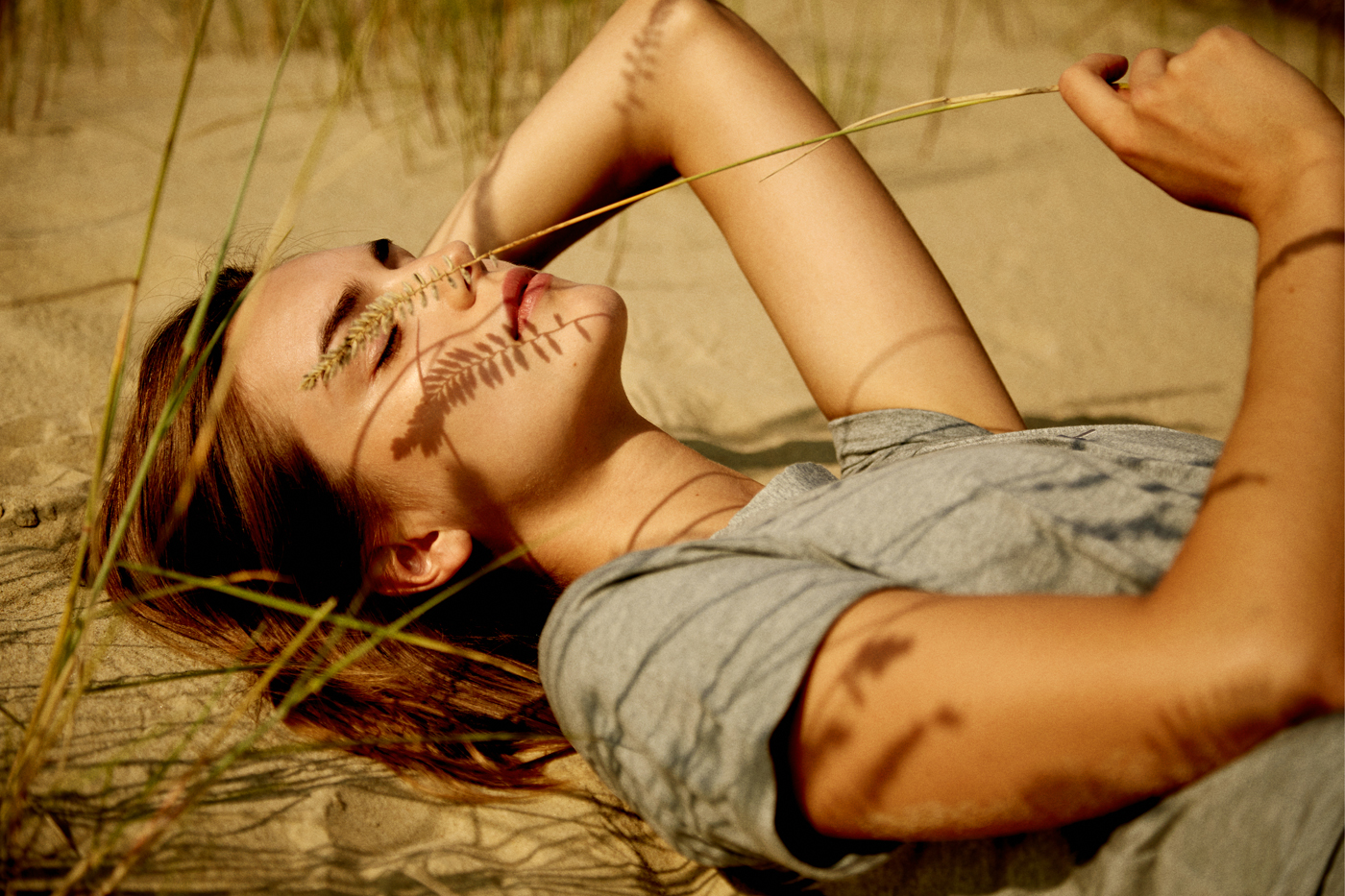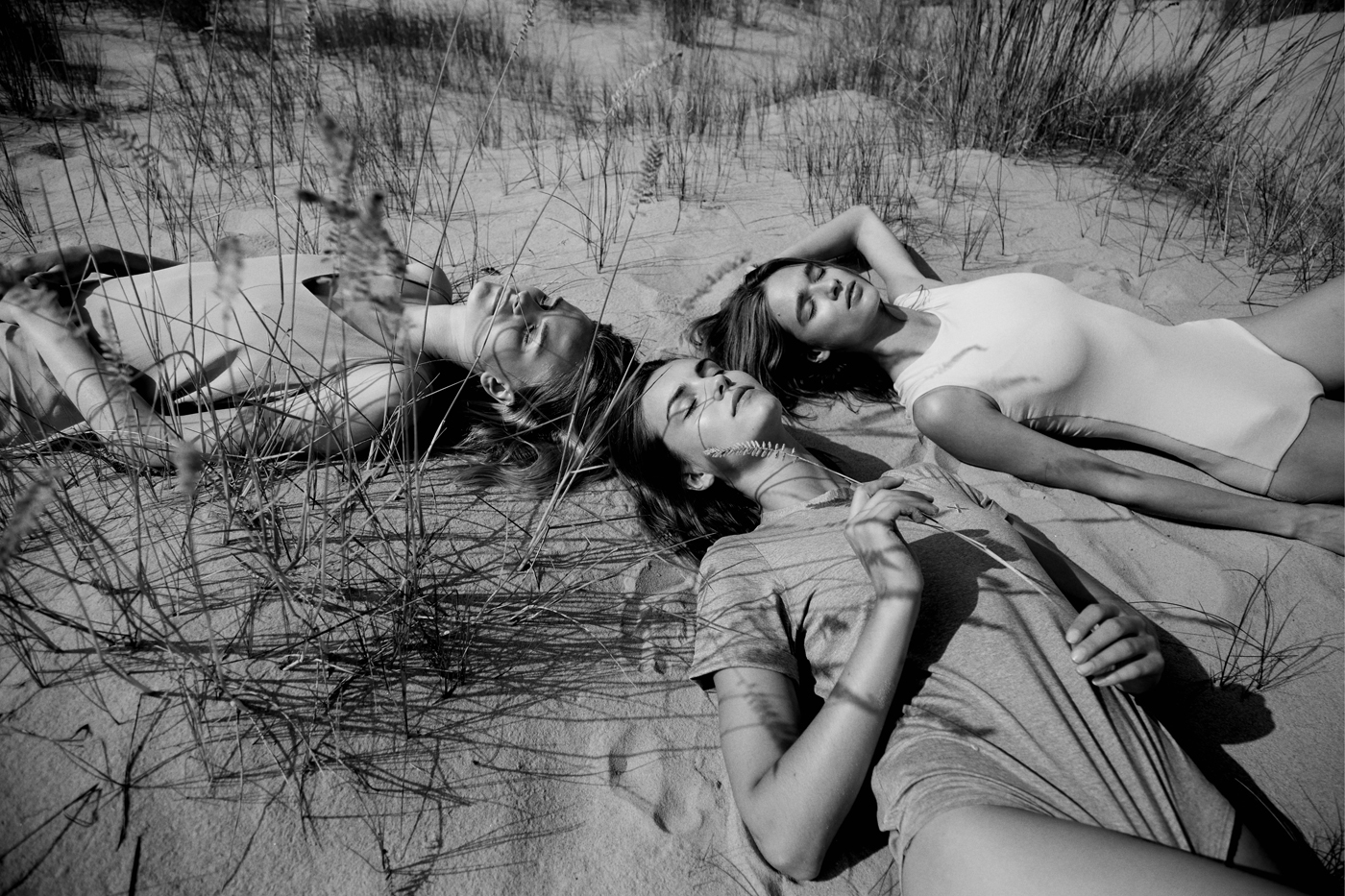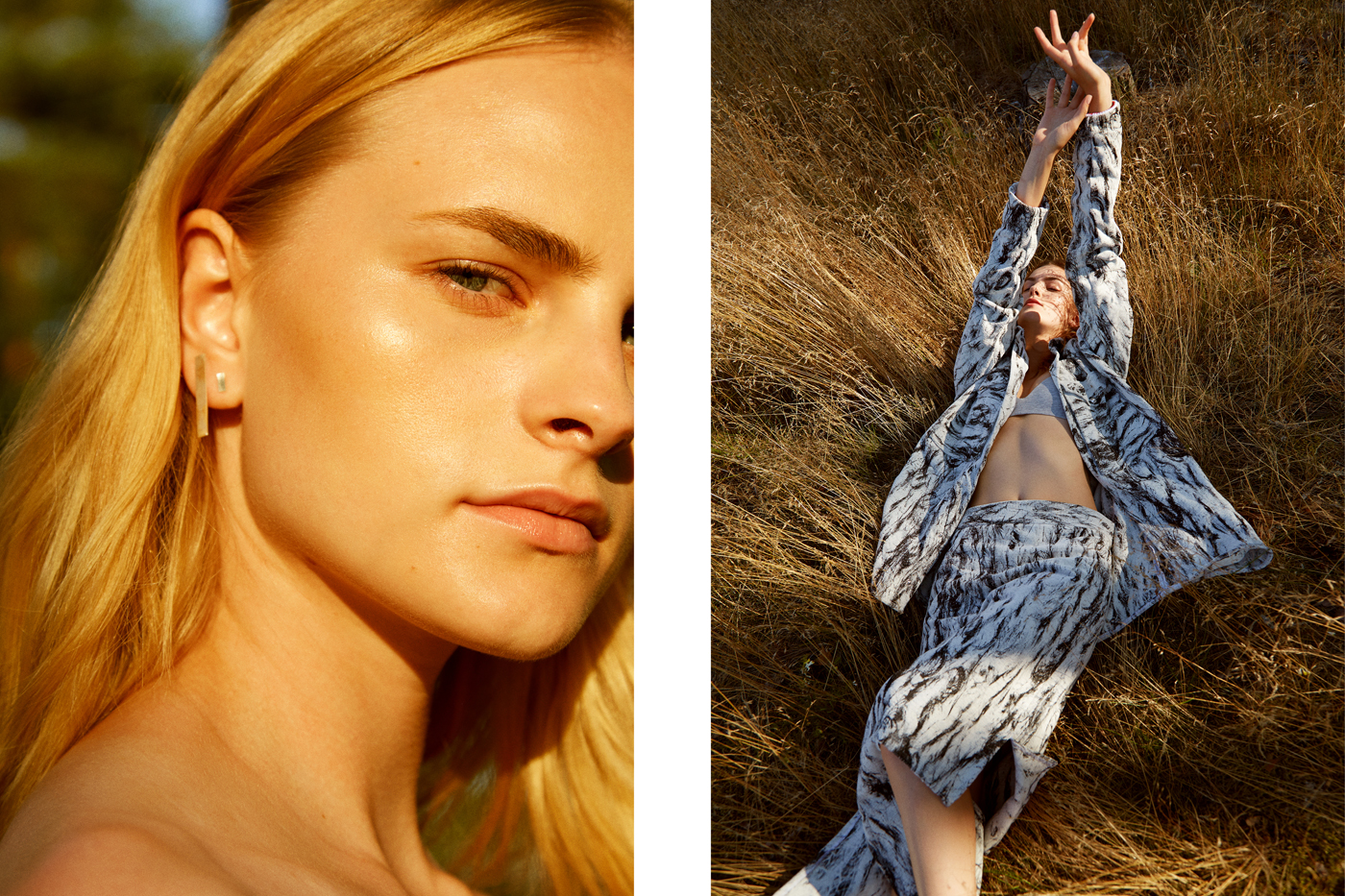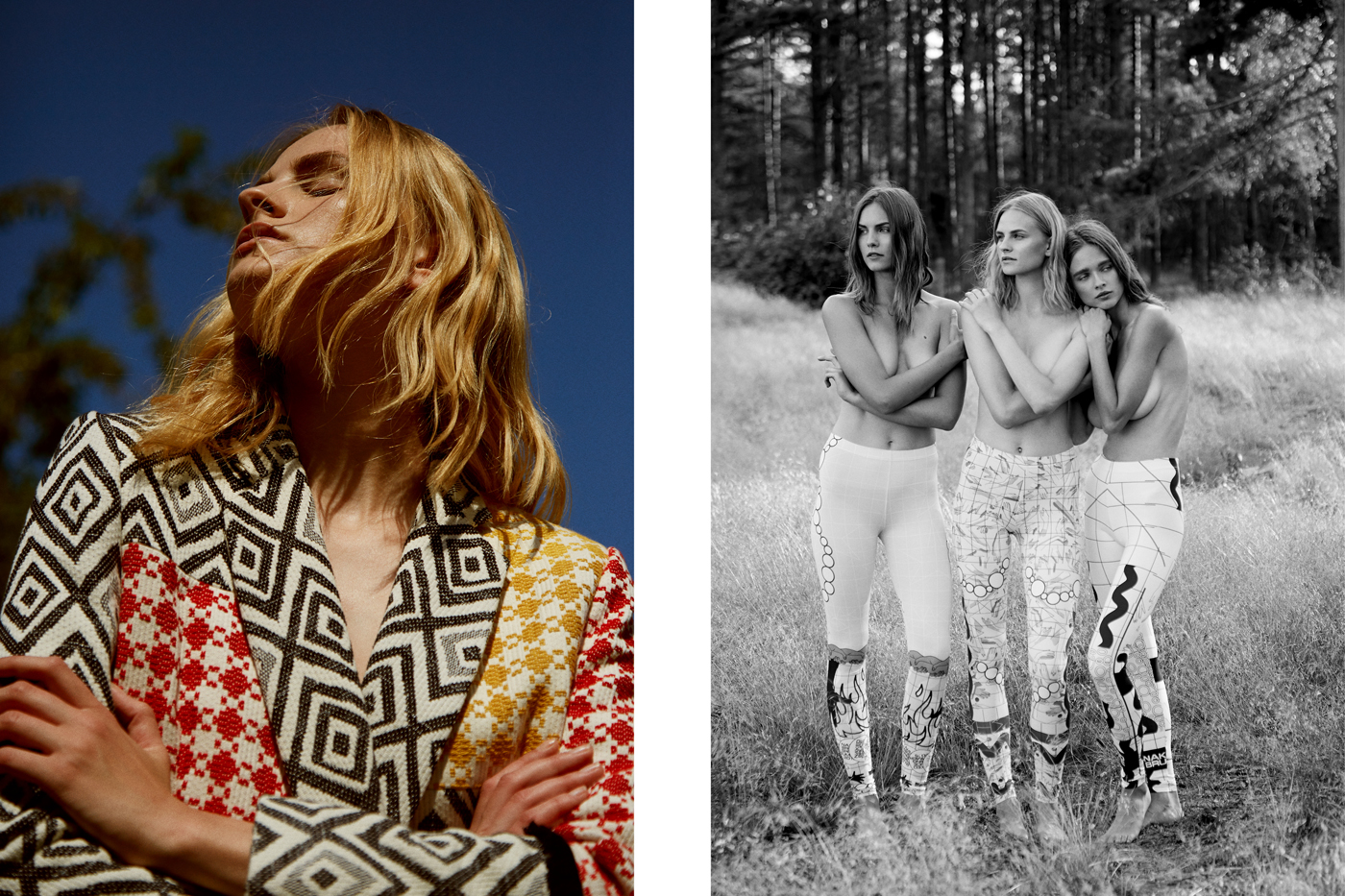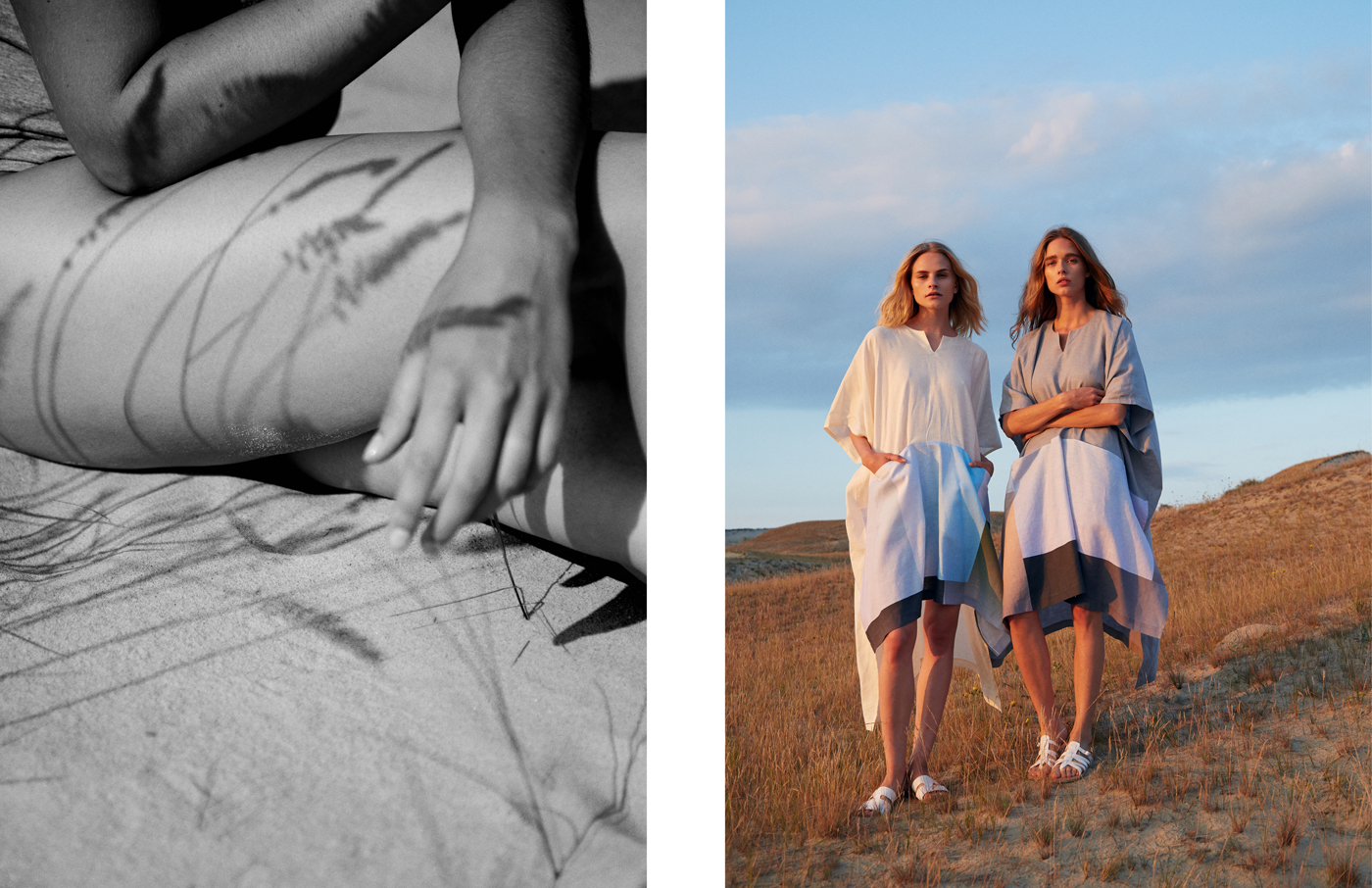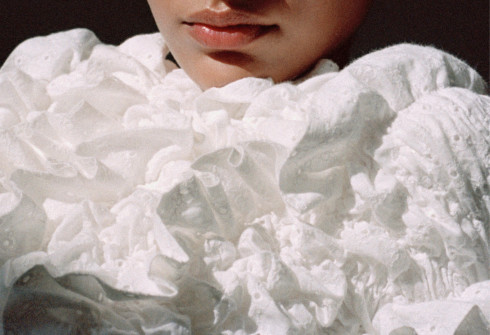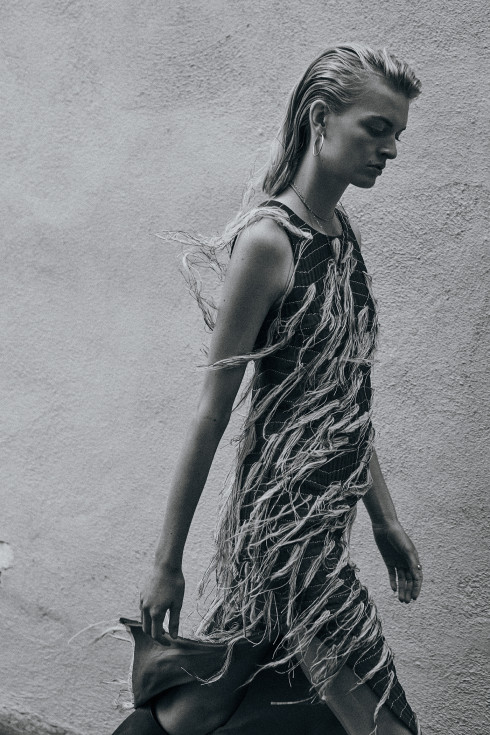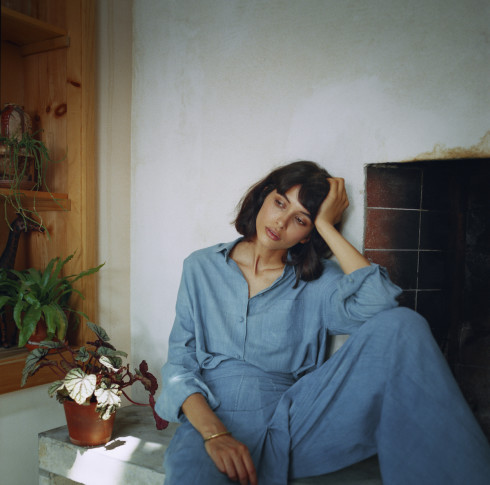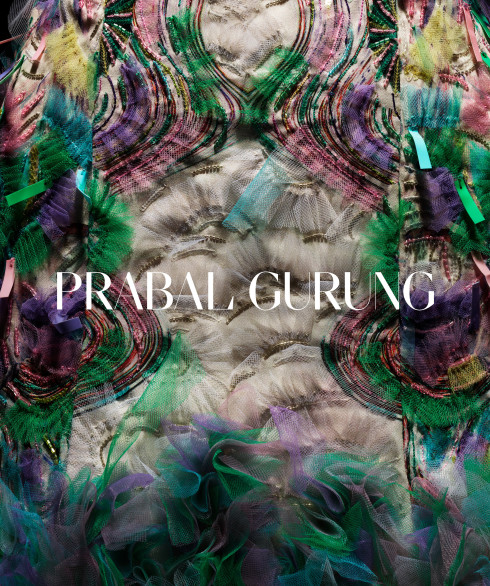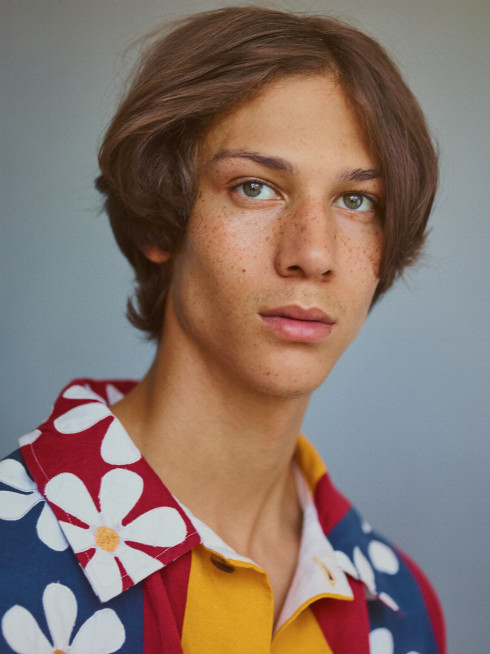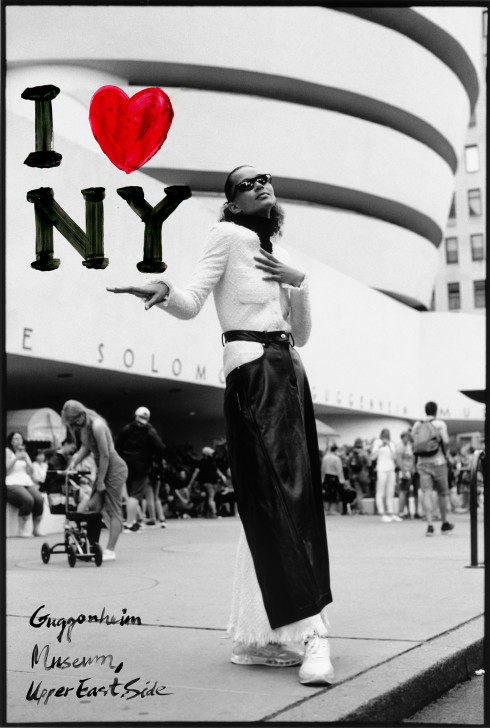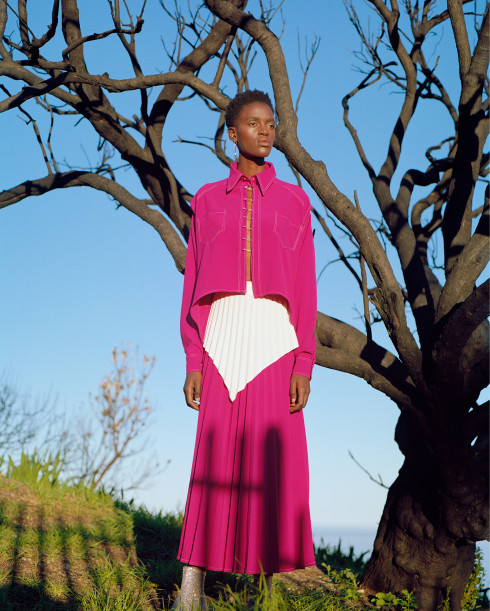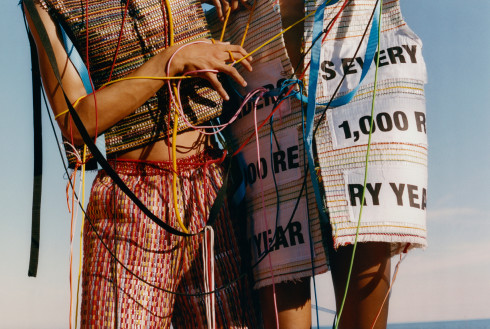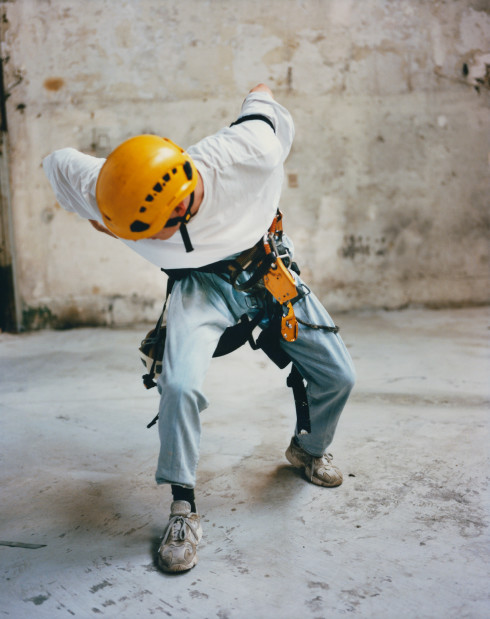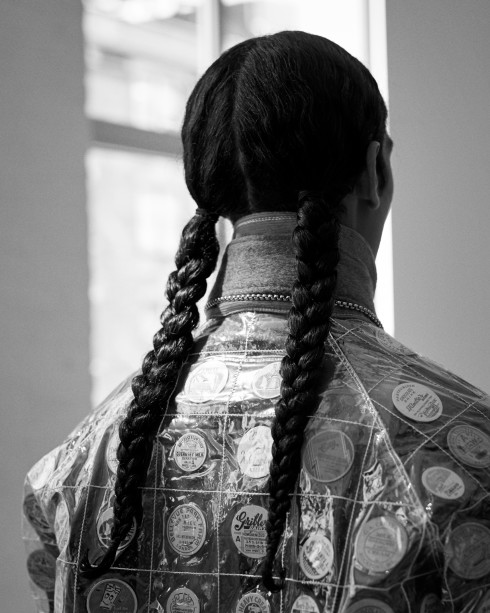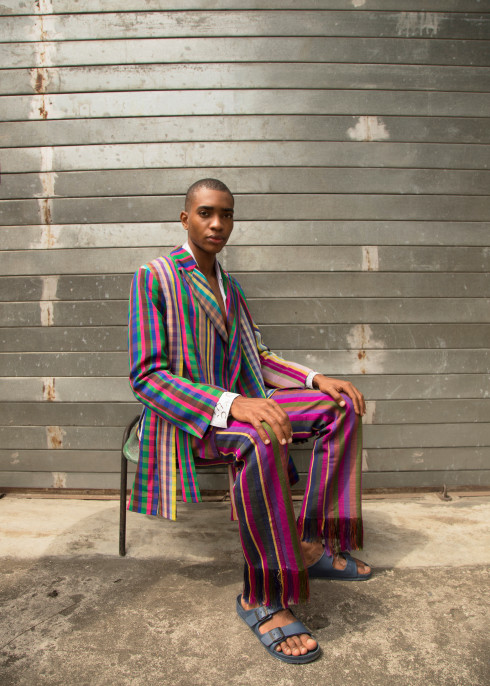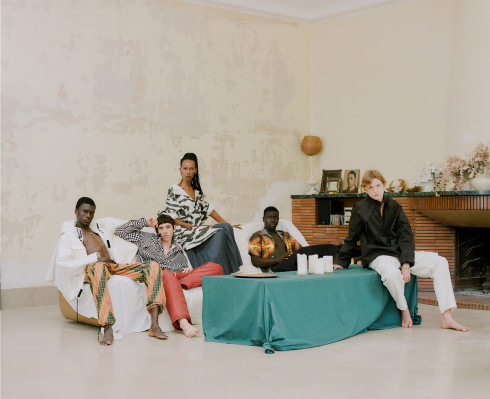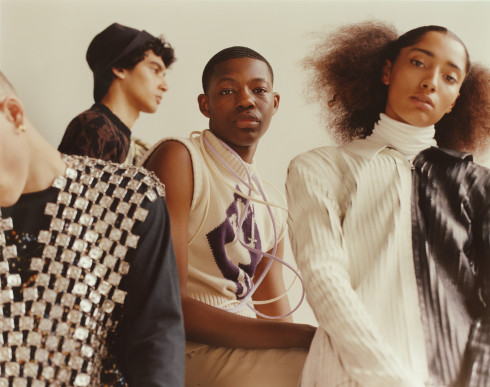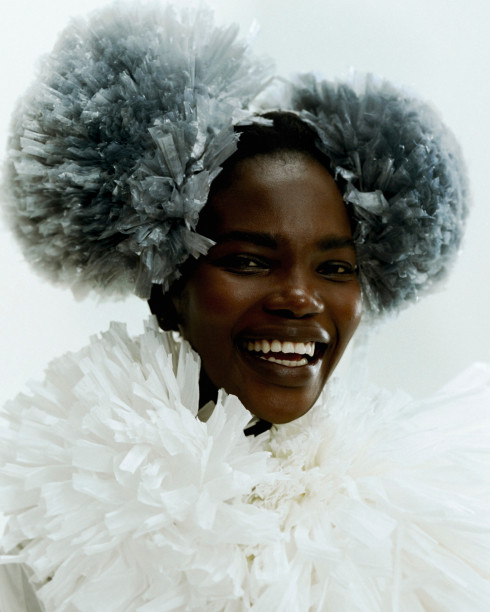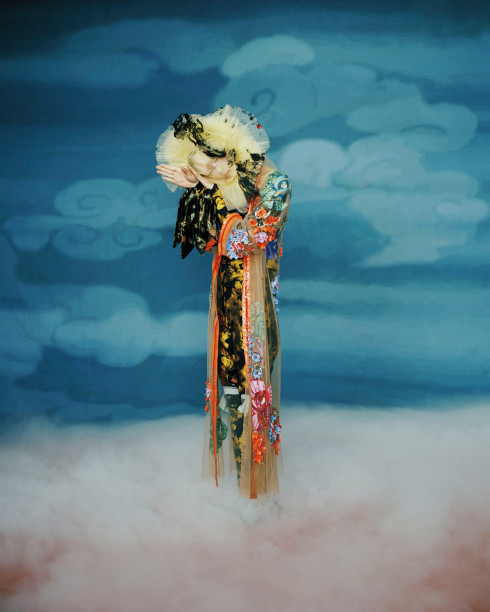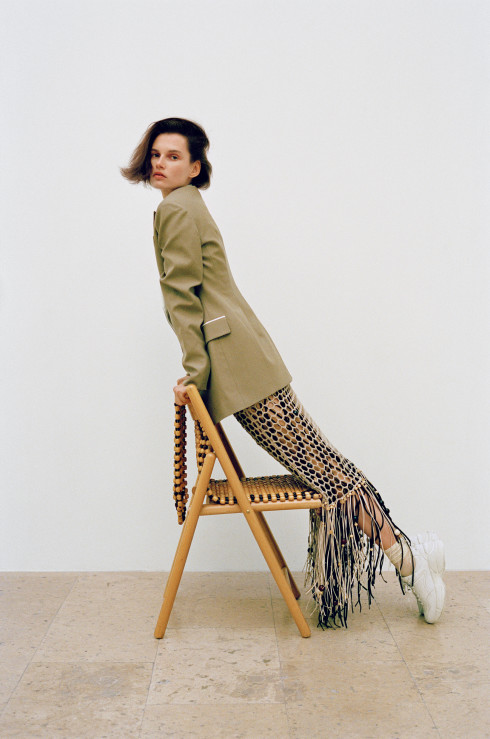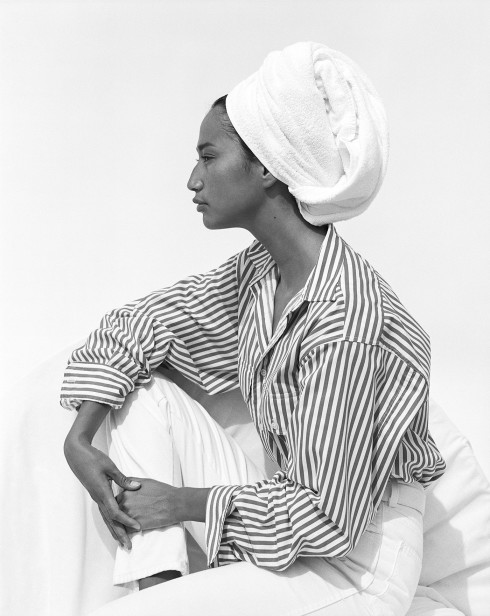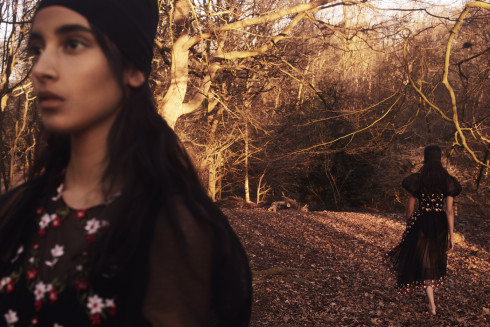
- Photography by
- Rokas Darulis
- Styling by
- Katy Lassen
Hair and makeup by Kristina Ralph at Saint Luke Artists. Models: Beegee Margenyte at PMST Models and Kristina Petrosiute and Julija Steponavičiūtė at Baltic Model Management.
BALTIC POWER, PART ONE
On the edge of the Baltic Sea, the small countries of Estonia, Latvia, and Lithuania help mark the divide between Russia and the rest of Europe, a border that, with Trump’s discrediting of NATO and coziness to Putin, is in the news again as a potential future battleground. Formerly part of the Soviet Union, all three nations have made cautious progress towards Western Europe in the past few decades, and a vibrant cultural scene has sprung up. Earlier this year, photographer Rokas Darulis, now based in London, returned home to his native Lithuania to capture the country’s mix of rustic beauty and urban strength, capturing three Lithuanian models dressed in all local designers by Katy Lassen. The resulting portfolio, the first half of which appears below, is a reminder that there is interesting and surprising work happening everywhere, if you only know how to look.
NAKED BRUCE
“There is no better feeling than being caressed by someone you like,” says Monika Vaitkiene. Her powerfully loud, sustainably focused sportswear line, Naked Bruce, revels in that delicate comfort, proposing a new sense of vulnerability upon wear. Bruce, Vaitkiene’s imagined mascot, is meant to represent man himself, and the symbiotic nature of intimacy and individuality is explored in each of her colorful pieces. From the brand’s core product, allergy-free leggings that absorb moisture to let bodies breathe, to a wide range of ready-to-wear and swimsuits for women (men’s, she hints, is to come next season), the assortment combines hand-drawn artistry with the designer’s feel-good intent. Patterns—from flaming digital prints to softer, urban designs—echo the sentiment in easy silhouettes that reflect an overall Northern Lithuanian æsthetic. Despite the gentle cultural connections, Vaitkiene, who previously studied international relations at Vilnius University, is not entirely referential. “The designs are vibrant yet symmetric, as is the Baltic culture, with all of its recent Soviet history,” she says. “Then again, my main focus is on individual feelings and senses—and they are neither Lithuanian nor Latvian.” —Joshua Glass
D.EFECT
Some seasons, Eglė Žiemytė cannot exactly pinpoint what makes D.Efect—a brand that, as its name might imply, tiptoes on the humor of irregularities—quite so Lithuanian, but for Spring 2017, the answer is quite clear. “I drew direct inspiration from different periods of Lithuania and combined them together,” says the designer. “You can see ethnic motifs and national costume details, but there is a big part of the collection inspired by the post-Soviet phenomenon.” Launched on the runway in 2009, the brand began with coats—tailored, beautiful bodies—that would eventually influence its sculptural æsthetic for ready-to-wear, which, today, dances in between the masculine and oversized and colorful femininity. There is contrast. There is a tongue-in-cheek air. Take Žiemytė’s own curious story, for instance, whose appointment at the brand happened by mistake while competing for the title with another designer coincidentally of the same name. After making its decision between the two, the company unbelievably called the wrong applicant back. Years later, the silly hiccup has proven to be quite fortuitous as Žiemytė’s mark continues to expand and experiment as she serves as the creative auteur in charge all across the board. “Being opinionated and having my own principles has shaped the brand and its own unique style,” says Žiemytė. “We never wanted to be liked by everyone. That’s why we have such a compassionate fan base.” —Joshua Glass

BODY STORY
Founded in 2013, Body Story is a Lithuanian label focused on the production of timeless staples, designed to let the body do the talking. Accentuating the lines of the female form, their rotation of bodysuits and simple dresses marks a considered point of difference amongst all the excess. According to Body Story designers Veta Armonaite and Rasa Malinauskaitė, their initial inspiration for the label stemmed from functionality—”the need for easy, wearable bodysuits”—and armed with this vision, it took them just three months to build the brand from concept through to first public presentation. With Body Story, it is all about the finer details, “from single stitch to overall fit,” the designers explain. “We choose natural materials like modal, viscose, or silk, and our bodysuits have hidden stitches in order not to irritate the skin.” This seamless approach is very important to Armonaite and Malinauskaitė, who “believe that a body should come first in every woman’s life. And clothing—that thin piece of fabric separating us from the world—is made to treat our bodies well and make them feel comfortable.” The small mark hidden within each garment, for example, is a personal touch that captures their carefully considered approach. Quality and authenticity remain paramount for this particular brand, characteristics that also seem symbolic within the Lithuanian fashion industry more broadly. “Although we’re a small country with a very small fashion industry, we’re very lucky to have amazing production quality here,” say Armonaite and Malinauskaitė. “‘Made in Lithuania’ has already become a sign of quality throughout the whole world.” Unequivocally, then, Body Story makes a case for slipping into something more comfortable. —Rosie Dalton
BOBRÍQ
Controlled chaos best describes bobríq, the jewelry line by Lithuanian designer Alina Bobrik. Her Spring 2016 collection, described as “chaos,” was filled with contradictions, with different weights, sizes, and distances between gemstones delicately hung on thin silver chains. “I am challenged to make an object look impressive due to its simplicity—just minimal, subtle, and clean objects,” Bobrik says. Inspired by architectural structures like the Swedbank building in Vilnius, the Harpa Concert Hall in Reykjavik, and the H27D staircase in Germany, asymmetry controls her process. All structures are intentionally skewed and imbalanced. Her next collection “Threesome” is a continuation of that design process. “It is very geometrical,” Bobrik explains. “It is a synthesis of perfect formal shapes and imperfect angles and abrupt cuts.” Silver is her medium of choice for its subtlety, as opposed to gold, which is more luxurious. Bobrik did not study design, but instead earned a degree in communication sciences. The only design experience she had until bobríq was some additional drawing classes, and she established the line in 2015 hoping to create her take on “simple but chic” jewelry. Lithuania isn’t a country associated with design and creativity, but Bobrik says she believes there is a distinct “Lithuanian style.” “I think a number of really talented, extraordinary, and exclusive brands are growing,” she says. “I think we have northern elements of style. We are modest in colors, but we are original in forms, cuts, and the functionality of the design objects.” —Alexandra Sarabia
LIUCIJA KVASYTE
Liucija Kvasyte has made an impressive name for herself as a stylist, but says that pursuing design was always in the cards. Having graduated from both bachelor’s and master’s programs in fashion design, Kvasyte explains that this is what gave her a core foundation in fashion and has proven essential for her styling work—prompting her to choose projects that demand more creativity and flexibility. In addition to her styling work, Kvasyte currently works as a designer under her own name, which offers her a medium for creative expression. “For me, the most important thing is a conceptualism,” she explains, “which is why all of my collections have a strong ideological identity and background.” Most of all, Kvasyte says she enjoys experimenting with contrasting themes and deconstructing standard objects, transforming them with atypical materials or surfaces. “I am the most inspired by fabrics and textures,” Kvasyte explains, “which is why a large piece of clothing offers the perfect opportunity to reveal the fabric pattern, by embroidering or printing it.” One gets the sense that this young designer’s journey to carving out her individual identity is not so different to that of Lithuania’s fashion industry in general. “Lithuania is a young country, and the way we create shapes our cultural face,” she says. “This is a very interesting, but at the same time very responsible, period.” Because the country was occupied for so long, Kvasyte explains that there has been a tendency to mimic Western experience, but that Lithuania has now truly begun to realize it’s own identity. The designer herself, likewise, seems to have discovered her own too—infusing each collection with rich themes that force us to think, as with her most recent collection “God Save the Punks” for instance. “I wanted to draw the public’s attention to the importance of religion,” Kvasyte says of the collection. “Specific religious symbols are incorporated into contemporary punk’s subculture usage, creating an object with a deeper idea—it is like the opportunity for each of us to ‘try on’ religion.” Mostly, it makes us want to try on Liucija Kvasyte’s designs instead. —Rosie Dalton
ANCHOVY
Graphic text has long been having a fashion moment, as brands as high as Christian Dior and as huge as Calvin Klein continue to make a statement through the power of the written word. Through an unlikely process, though, London-based, Lithuanian lifestyle brand Anchovy has innovated the form in a new and exciting way, harnessing the surprise of a customized color-generating mobile app to inspire its fabrics. “We let data decide what colors we will use in our upcoming collections,” says co-founder Giedre Kosė, a jewelry designer, Japanese fashion collector, and all-around renaissance woman who began experimenting with data and textile design with her partner Karolis Kosas in the States years ago. Each season now, the two, along with designer Morta Griskeviciute, sample words, entering letter combinations as meaningful or as random as their choosing into their color-making machine to architect haphazardly beautiful gradients. Available to the public too, the app (also titled Anchovy), offers cross-platform use, with spectrums ready to be shared online or in printed form. “It’s rewarding to allow everyone to become a designer,” says Kosė, whose recent favorite find (the word “hell”) results in a warm sunset of tangerines and fuchsias. “I play daily,” she says. “I especially love turning dark words into bright colors.” —Joshua Glass
See part two of our Lithuanian portfolio here.
- Photography by
- Rokas Darulis
- Styling by
- Katy Lassen
Hair and makeup by Kristina Ralph at Saint Luke Artists. Models: Beegee Margenyte at PMST Models and Kristina Petrosiute and Julija Steponavičiūtė at Baltic Model Management.
